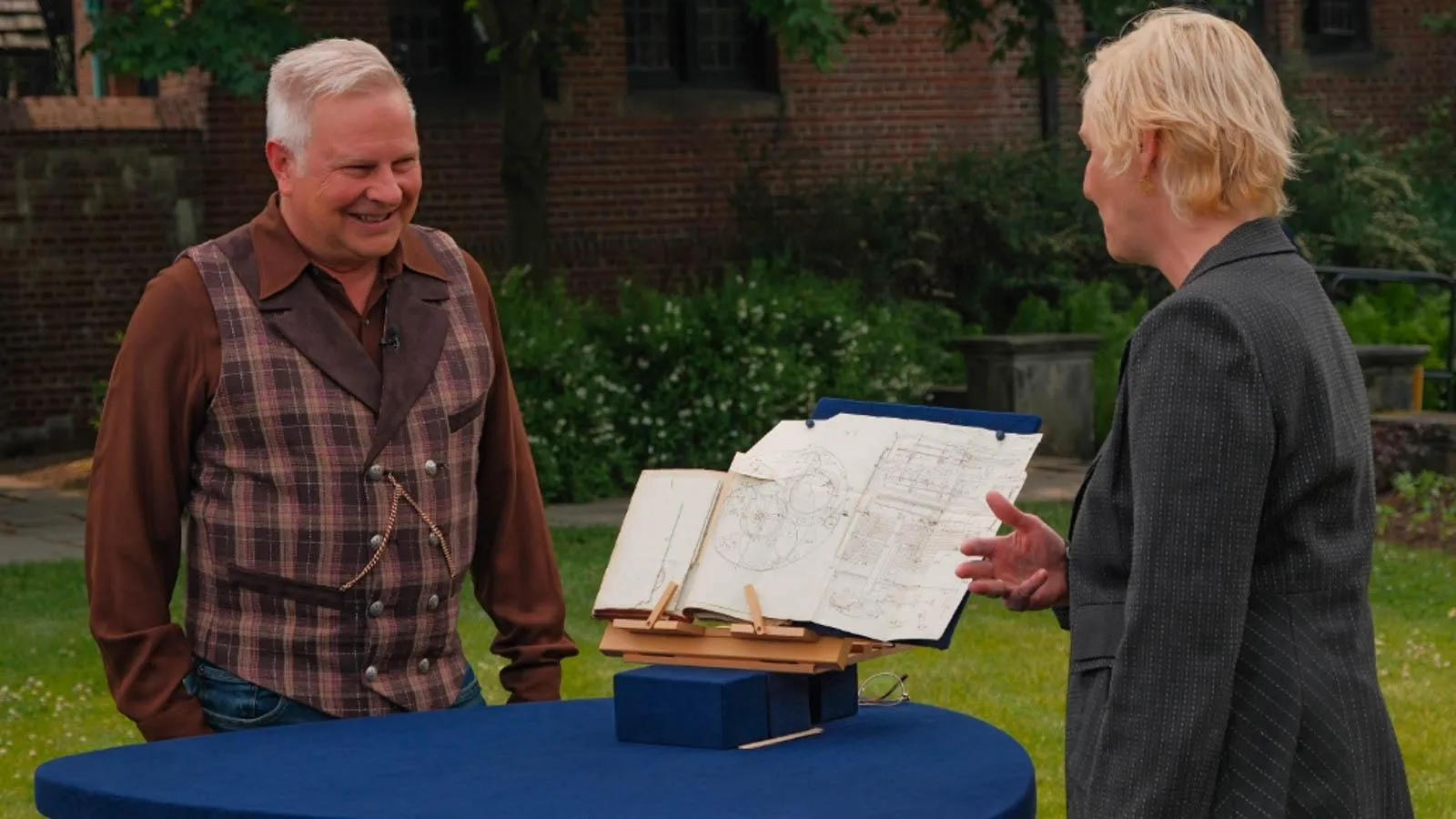GUEST: My father was a violinist, a concert violinist, and he lived down in Florida. And one time, he s, said he bought a wonderful violin, something better than he had, and he paid $175 for it.
APPRAISER: Uh-huh.
GUEST: And he took it home.
APPRAISER: Oh, and when was this?
GUEST: In 1990-- early '90s. Early '90s.
APPRAISER: Yes. And did he play this violin then?
GUEST: He played it a little bit, but he went back to the violin that he played for 50 years because he liked its tone. But then why did he... But he always said that this was a better violin than his. (chuckles)
APPRAISER: When I first opened the, the case and looked at it, I immediately recognized what it was. So the maker of this violin is Ernst Heinrich Roth, and it's dated 1926. The other thing that's unusual about it for an Ernst Heinrich Roth is, it's an Amati copy. They didn't make very many Amati copies. So by an Amati copy, we mean the, the shape of the instrument, the outline here, the shape of the f-holes, the scroll, all those were in the style of Amati, who was a famous Italian violin maker. Ernst Heinrich Roth had this violin establishment in Markneukirchen, Germany, and he went into business with another violin maker. They produced these violins in different qualities, and this was a very high-quality instrument for the Roth Company at that time. It has a label on the inside, uh, with his name on it. It says it's an Amati copy of, I believe it was 1640.
GUEST: Hm.
APPRAISER: He also branded the instruments.
GUEST: Oh.
APPRAISER: And it says "Ernst Heinrich Roth, Markneukirchen." And then there's a, a letter A and a, and a number. The A stands for Amati. You'll notice it had a one-, a beautiful, one-piece back, it's an oil-based varnish, and very typical of Ernst Heinrich Roth, kind of reddish, reddish-brown. And then it faded into this very beautiful golden color.
GUEST: Ah.
APPRAISER: And then the tops were made out of Italian spruce.
GUEST: Hm.
APPRAISER: And those instruments that were made between 1920 and 1930...
GUEST: Mm-hmm.
APPRAISER: ...were the most desirable of the Roth instruments.
GUEST: Mm-hmm.
APPRAISER: Unfortunately, this bow, you can see, it was not a very expensive bow, and, and bugs have gotten to the hair.
GUEST: Ah, mm-hmm.
APPRAISER: The bow, as it is there, really has no value.
GUEST: Okay, it may not have been the same bow that was... He gave me about four different bows, so...
APPRAISER: Oh, really?
GUEST: Yeah. Uh-huh.
APPRAISER: I would expect a bow that would have gone with this instrument would have been much more expensive.
GUEST: Ah.
APPRAISER: The case doesn't really have any value. The real value is completely in the violin. I would put a retail value on that of $10,000.
GUEST: Oh, my... Oh, my goodness. $10,000?
APPRAISER: $10,000.
GUEST: Oh, my goodness.
APPRAISER: What did you expect?
GUEST: Oh, my... What... I, I had no idea. Oh, my goodness, that's wonderful. Well, thank you... He would have been thrilled.



